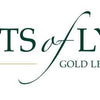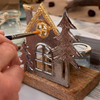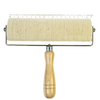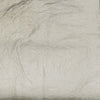Gold Leaf Across the World - Switzerland
- by Sam Wozniak
The History and Uses of Gold Leaf in Switzerland: A Monumental Golden Tradition
Switzerland is often associated with precision engineering, watchmaking, and breath-taking Alpine landscapes — yet it also holds a rich and often underestimated artistic heritage centred around gold leaf. From medieval manuscripts to monumental church interiors, from the decorative arts to modern luxury branding, goldleaf has played an enduring and influential role across Swiss culture. The use of 24 carat and 23.5 carat gold leaf in Switzerland spans centuries, blending religious symbolism, skilled craftsmanship, and cutting-edge restoration practices.
This comprehensive exploration traces the evolution of gilding in Switzerland, examining how gold leaf was used historically, how artisans refined their techniques, and how contemporary Swiss culture continues to embrace goldleaf in art, architecture, and luxury design.
Early Swiss Gilding: Gold Leaf in Medieval Manuscripts and Sacred Art
The earliest widespread use of gold leaf in Switzerland dates back to the Middle Ages, particularly within the monastic scriptoria that flourished between the 8th and 12th centuries. Swiss monasteries — including the world-renowned Abbey of St. Gall, a UNESCO World Heritage Site — became key centres of artistic production. Monks applied 24 carat gold leaf to illuminate manuscripts, adorning religious texts with shimmering halos, borders, and symbolic imagery.
This goldleaf decoration served both aesthetic and spiritual purposes. Gold was considered a symbol of divine light, purity, and eternity. Applying thin, radiant sheets of 24 carat gold leaf allowed scribes to convey celestial significance within the pages of sacred works. The technique required extraordinary skill: gold leaf was beaten to exceptional thinness, carefully handled, and applied using specialized adhesives derived from natural materials.
Swiss gold leaf craftsmanship spread beyond manuscripts into panel paintings, wooden altarpieces, reliquaries, and liturgical objects. Many medieval churches throughout the cantons — particularly those in Zurich, Bern, Lucerne, and Geneva — exhibited ornamentation that included gilded carvings, symbolic mosaics, and architectural details. These early examples laid the foundation for Switzerland’s enduring relationship with goldleaf artistry.
Renaissance and Baroque Switzerland: Monumental Gilding in Churches and Palaces
Although Switzerland did not develop a royal court like many European neighbours, the Renaissance and Baroque eras still produced monumental works of gilding. Civic leaders, religious institutions, and affluent merchant families sponsored large-scale artistic commissions, many of which involved gold leaf.
The influence of Italian, German, and French artistic movements was especially strong in cities like Basel, Lugano, and Lausanne, where cross-cultural exchange was common. Swiss Baroque churches, in particular, demonstrate impressive gilding traditions:
Gilded Baroque Altars and Sculpture
During the 17th and 18th centuries, Swiss artisans used 23.5 carat gold leaf extensively in the creation of altarpieces, pulpit decorations, organ casings, and sculptural elements. This carat level, slightly less pure than 24 carat, provided greater durability, making it ideal for wooden carvings in church interiors.
Monumental Ceilings and Architectural Flourishes
In cantons like Valais and Fribourg, monumental church ceilings incorporated ornate gilded motifs, floral designs, and symbolic iconography. Goldleaf gilding elevated these interiors, creating luminous spaces intended to reflect religious devotion and the glory of the divine.
Although Switzerland is often associated with restrained and minimalist design, its Baroque religious architecture is a vivid exception — filled with movement, drama, and lavish golden ornamentation.
The Swiss Guild Traditions: Craftsmanship and Gold Leaf Expertise
By the 16th century, Switzerland had established structured guilds for various crafts, including painters, sculptors, metalworkers, and gilders. These guilds formalized training in goldleaf techniques, ensuring that knowledge passed from master to apprentice with precision.
Swiss gilders specialized in a variety of methods:
Water Gilding
A highly refined technique using a clay-like bole and burnishing stones — ideal for decorative frames, sculptures, and ecclesiastical furniture.
Oil Gilding
Used for architectural surfaces exposed to changing temperatures, such as doors, signage, and exterior ornamentation.
Gilding on Metal and Leather
Switzerland’s proximity to trade routes enabled artisans to adapt international techniques, using gold leaf on embossed leather goods, ceremonial armour, and intricately crafted metalwork.
The legacy of the guild system profoundly shaped Swiss artistry, contributing to the nation’s reputation for precision and exceptional craftsmanship — values still embraced today in Swiss watchmaking and design.
19th and 20th Century Switzerland: Preservation and the Rise of Restoration
By the 19th century, Switzerland had become deeply invested in cultural preservation. As the nation modernized, there was growing recognition of the need to protect and restore historic churches, manuscripts, sculptures, and public buildings. This led to a surge in professional gilding restoration work.
Swiss conservationists often used 23.5 carat gold leaf in restoration because its slight alloy content allowed for better stability, especially when applied to older wooden or plaster surfaces. Specialized conservation schools and workshops emerged, many of which still operate today, training experts in:
-
surface cleaning
-
stabilizing old adhesive layers
-
reapplying gold leaf to damaged areas
-
colour matching aged gilding
-
historical research for accurate restoration
The restoration movement helped preserve Switzerland’s rich heritage of monumental gilded interiors and decorative objects, ensuring that future generations could continue to appreciate them.
Gold Leaf in Modern Switzerland: From Luxury Branding to Contemporary Art
Today, Switzerland’s relationship with goldleaf has expanded beyond religious or historical contexts. Gold leaf appears in a wide range of modern industries, reflecting the country’s design sensibilities and status as a global luxury hub.
Swiss Watchmaking and Goldleaf Application
Switzerland’s globally renowned watchmaking industry frequently uses 24 carat gold leaf and gold alloys as part of dial decoration, engravings, and limited-edition aesthetic elements. Master engravers and decorative specialists apply gold leaf to:
-
watch faces
-
serial number plates
-
artistic engravings
-
logos and insignia
The precision required aligns perfectly with Swiss craftsmanship traditions.
Contemporary Art and Architecture
Modern Swiss artists incorporate goldleaf into sculpture, mixed media, abstract painting, and conceptual installations. Gold leaf is used both for its aesthetic qualities and its symbolic power — exploring themes of value, purity, heritage, and the contrast between natural landscapes and industrial modernity.
Architects and designers sometimes use subtle gold leaf accents in luxury interiors, boutique hotels, and high-end commercial spaces to create a sense of warmth and understated elegance.
Cultural Branding and Gastronomy
In cities such as Zurich, Geneva, and Basel, high-end bakeries and chocolatiers have embraced edible 24 carat gold leaf for premium desserts, chocolate truffles, and gift collections — enhancing Switzerland’s reputation for luxury gastronomy.
Preserving the Past and Inspiring the Future: Switzerland’s Enduring Goldleaf Legacy
From medieval manuscripts to monumental Baroque altars, from guild traditions to modern luxury design, Switzerland’s use of gold leaf reflects a deep appreciation for craftsmanship, symbolism, and cultural memory. Whether applied as 24 carat goldleaf for purity or as 23.5 carat for durability during restoration, gold leaf remains an essential medium in Swiss art and heritage.
Switzerland’s gilded legacy continues to inspire contemporary creators and conservators alike — carrying forward centuries of tradition into the future with a radiant golden sheen.






